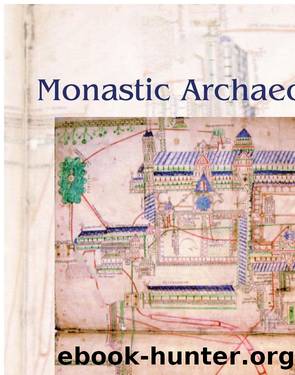Monastic Archaeology by Unknown

Author:Unknown
Language: eng
Format: epub
ISBN: 0000000000000
Published: 2020-08-04T14:59:16+00:00
4 Distribution of Potable Water beyond the Precinct
Sometimes lay people living outside the monastic precinct made direct use of the monastic supply. This was clearly not a satisfactory option. At the time of Bishop Alnwick’s visitation to Daventry Priory in 1442 the prior, Robert Man, complained of the women who regularly came through the cloister to draw water from the conduit, and requested that such access should be restrained (Visit.Dioc.Linc., II.i, 60).
As an alternative, a number of urban monasteries and secular cathedrals permitted extensions from their own supply to serve other monasteries, hospitals, inns, shops, private houses and town communities nearby. Waltham Abbey provided a separate supply from its conduit to the townspeople in the early 1220s (Chart.Waltham, 279–85, no 413). Bishop Beckington of Wells in 1451 granted the surplus from the cathedral supply for the use of the burgesses, and a public conduit-house was erected in the market-place of the town; he also provided a piped supply to the New Works, the terrace of twelve shops which he had built on the north side of the market-place. Similarly, the conduit to St Augustine’s Abbey, Bristol, was extended to serve houses in Trinity Street belonging to the canons. The fifteenth-century London Charterhouse plan shows pipes passing beyond the great cloister to four buildings outside the precinct, which appear to be inns or taverns (Bond 1993). Since 1236 the city of London had been piping water from springs at Tyburn, but in 1439 it acquired a second source from Westminster Abbey. In this year Abbot Richard granted to the mayor and commonalty of the city a piece of ground 26 perches long by one perch in width containing springs in a close called Oxlease on the abbey’s manor of Paddington (probably on what is now the north-west side of Craven Road near its junction with Westbourne Terrace) with the right to erect all necessary cisterns and to carry pipes above or below ground to the city through any intervening land belonging to the abbey outside its manor of Hyde, saving the rights of the abbey’s tenants in Paddington and subject to an annual payment of 1lb of pepper. A proviso was added that if the abbey’s own ancient supply from the manor of Hyde was in any way disturbed, the abbey would be entitled to reclaim the head and springs it had granted to the city (Davies 1913). The friars, who, of all the orders, perhaps took the most practically philanthropic stance, were especially prominent in providing public water supplies. Two or three of the friaries in Bristol extended their conduits into the town, and others in Boston, Gloucester, Scarborough and Southampton also entered into agreements with the town authorities (Bond, 1993).
The extent to which monastic granges had independent piped water supplies of their own is another question which requires further investigation. So far documentary evidence has been discovered only for the Fountains Abbey grange at Malham (see Appendix A, below).
Download
This site does not store any files on its server. We only index and link to content provided by other sites. Please contact the content providers to delete copyright contents if any and email us, we'll remove relevant links or contents immediately.
Fearfully and Wonderfully Made by Philip Yancey & Paul Brand(588)
Christian Ethics by Wilkens Steve;(571)
Numbers by Ronald B. Allen(503)
The World from 1450 To 1700 by Wills John E.;(499)
Christian Ethics: An Introduction to Biblical Moral Reasoning by Wayne Grudem(478)
How to Read Slowly by James W. Sire(458)
God and the Multiverse by Victor J. Stenger(447)
Morality by Jonathan Sacks(431)
Monastic Archaeology by Unknown(407)
The Disabled Church by Rebecca F. Spurrier;(396)
Jesus: A New Vision by Whitley Strieber(370)
Critical Writings by Joyce James;(366)
Death of the Doctor by Unknown(366)
Redeeming Sociology by Vern S. Poythress(364)
Amish Grace by Donald B. Kraybill & Nolt Steven M. & Weaver-Zercher David L(362)
The Technological System by Jacques Ellul(352)
Children of Lucifer; The Origins of Modern Religious Satanism by Ruben van Luijk(352)
The Catholic Case for Trump by Austin Ruse(334)
The Church in the Early Middle Ages by G.R. Evans(332)
